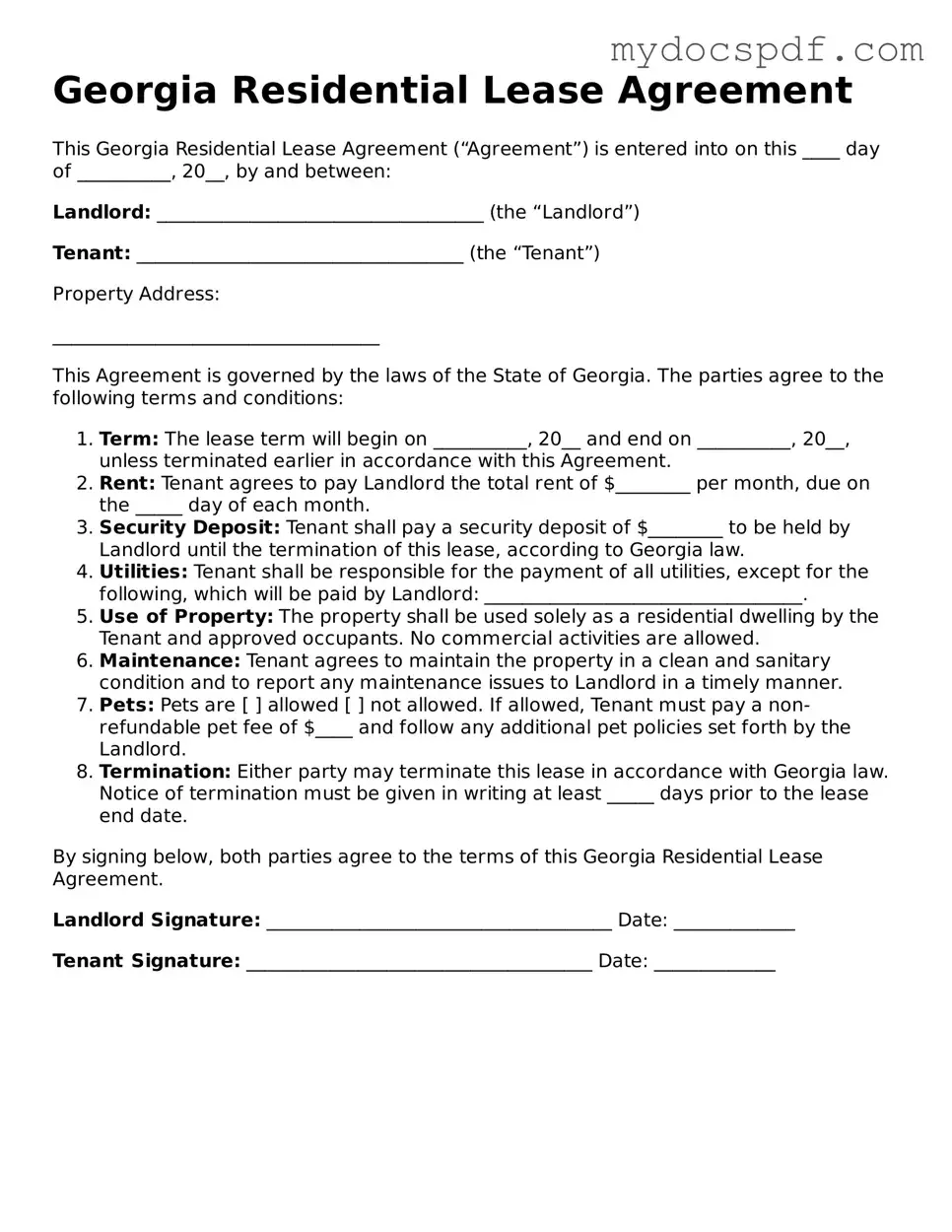Georgia Residential Lease Agreement
This Georgia Residential Lease Agreement (“Agreement”) is entered into on this ____ day of __________, 20__, by and between:
Landlord: ___________________________________ (the “Landlord”)
Tenant: ___________________________________ (the “Tenant”)
Property Address:
___________________________________
This Agreement is governed by the laws of the State of Georgia. The parties agree to the following terms and conditions:
- Term: The lease term will begin on __________, 20__ and end on __________, 20__, unless terminated earlier in accordance with this Agreement.
- Rent: Tenant agrees to pay Landlord the total rent of $________ per month, due on the _____ day of each month.
- Security Deposit: Tenant shall pay a security deposit of $________ to be held by Landlord until the termination of this lease, according to Georgia law.
- Utilities: Tenant shall be responsible for the payment of all utilities, except for the following, which will be paid by Landlord: __________________________________.
- Use of Property: The property shall be used solely as a residential dwelling by the Tenant and approved occupants. No commercial activities are allowed.
- Maintenance: Tenant agrees to maintain the property in a clean and sanitary condition and to report any maintenance issues to Landlord in a timely manner.
- Pets: Pets are [ ] allowed [ ] not allowed. If allowed, Tenant must pay a non-refundable pet fee of $____ and follow any additional pet policies set forth by the Landlord.
- Termination: Either party may terminate this lease in accordance with Georgia law. Notice of termination must be given in writing at least _____ days prior to the lease end date.
By signing below, both parties agree to the terms of this Georgia Residential Lease Agreement.
Landlord Signature: _____________________________________ Date: _____________
Tenant Signature: _____________________________________ Date: _____________
